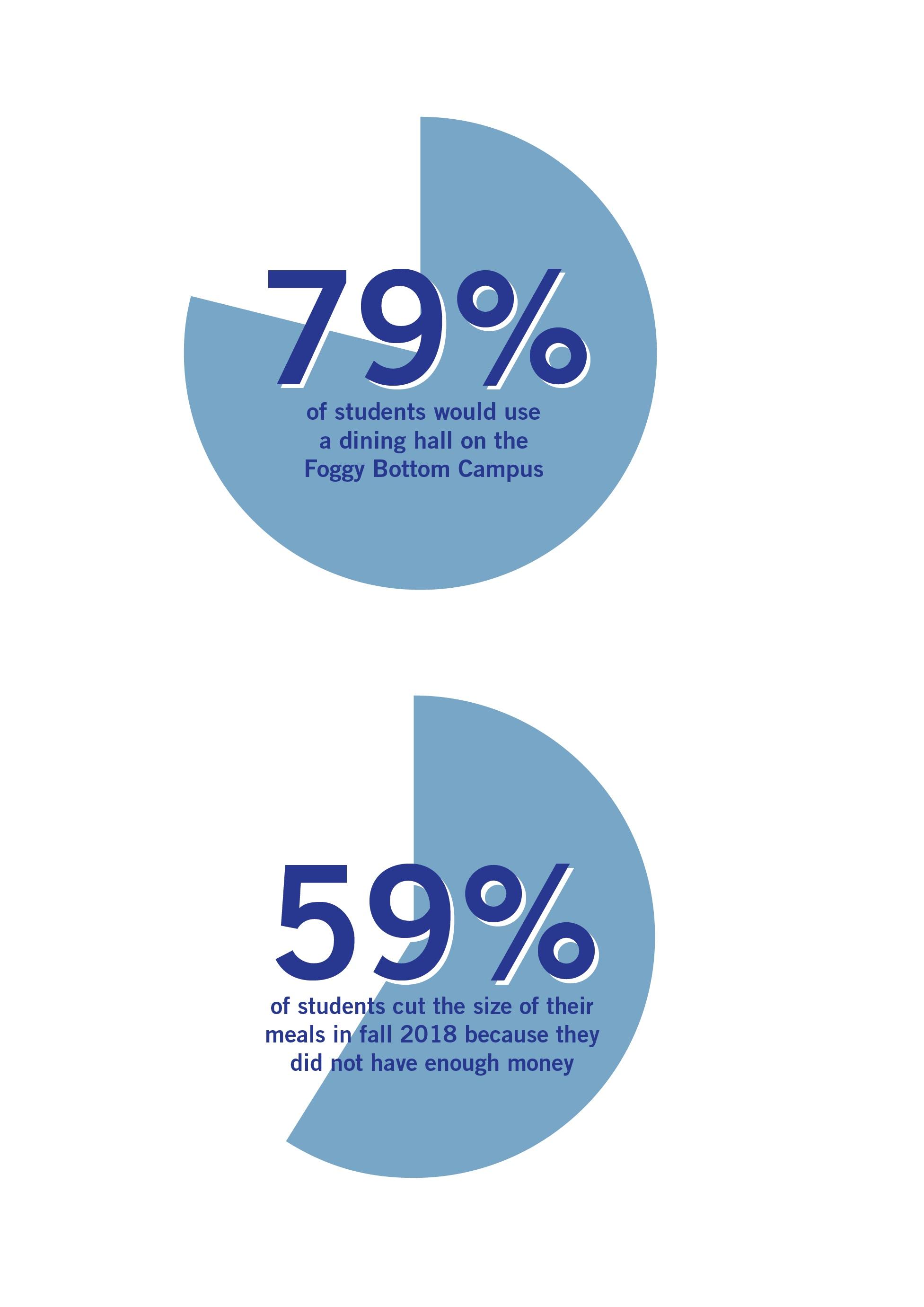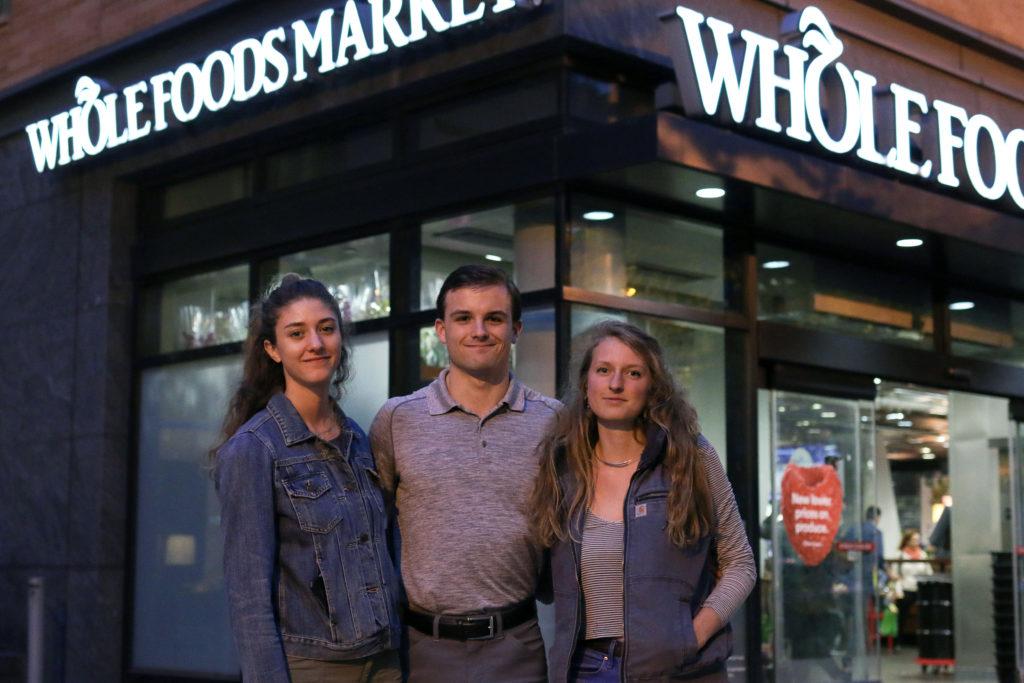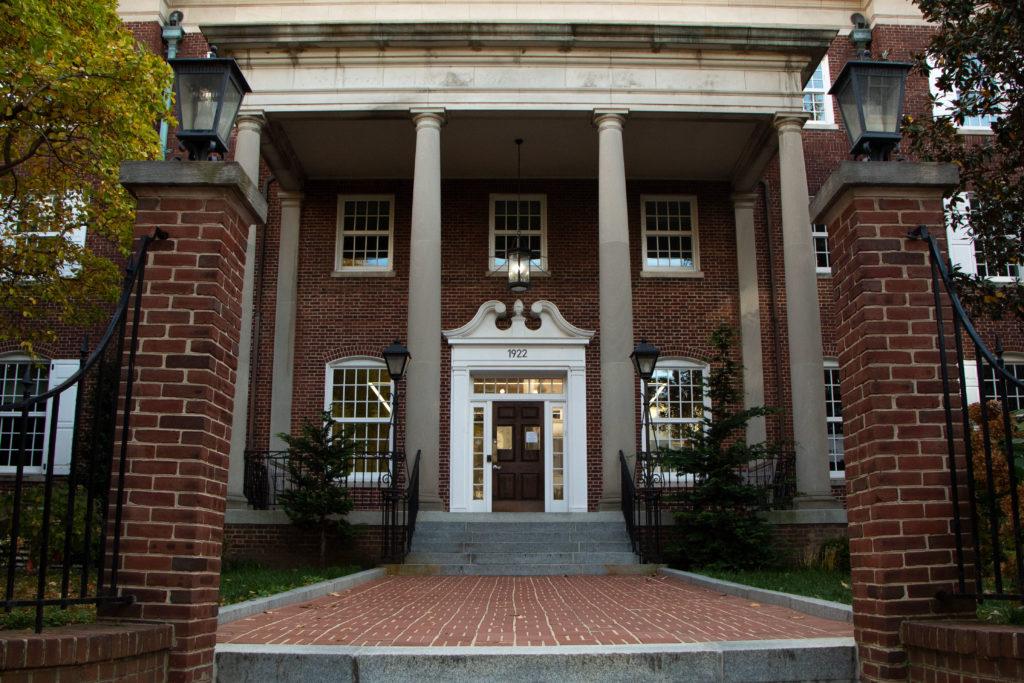Updated: April 9, 2019 at 10:05 a.m.
Student leaders released a list of nine recommendations Monday urging officials to curb food insecurity on campus through measures like opening a dining hall on the Foggy Bottom Campus and offering more meal deals.
The recommendations are the culmination of nearly a year of research conducted by a student-led food experience task force that formed last semester. Those involved in creating the report said the suggestions – which also include creating a biannual report on the state of dining at GW – would make meals more affordable and accessible to students.
“From here, it is the job of University administrators to use these data results and suggestions to make informed, evidence-based improvements to our campus dining plan,” Izzy Moody, the SA’s vice president for sustainability and a member of the task force, said in an email.
The recommendations stemmed from the results of a dining survey sent to about 2,000 students earlier this semester. The survey asked students several questions, like whether they have experienced food insecurity, if they have access to culturally diverse food and whether they support opening a dining hall in Foggy Bottom.
The survey found that nearly 60 percent of students purchased less food than they normally would for a meal last semester because they did not have enough money. The task force also found that nearly 80 percent of students would utilize a dining hall in Foggy Bottom if it were available.

Alyssa Ilaria | Staff Designer
Source: The State of Dining report
Foggy Bottom’s last dining hall, J Street, closed in 2016 after years of student complaints about the affordability and quality of the food.
Moody said the group’s recommendations were also formed based on conversations with other members of the task force – including faculty, staff and officials – and students who struggle with food insecurity.
She said Cissy Petty, the dean of the student experience; Michael Tapscott, the director of the Multicultural Student Services Center; and Jordan West, the director for diversity and inclusion education, regularly attended meetings with members of the task force to discuss the impact of food insecurity on student life.
Moody said students serving on the task force also encouraged officials to institutionalize an advisory committee comprised of students from the task force, faculty and administrators, who will continue gathering data on dining at GW and release a report on the state of food insecurity every two years.
“The survey findings, as well as the effectiveness of the food experience task force, also underscore the importance of a body on campus committed to researching and improving the student food experience,” Moody said.
Sage Wylie, a former Food Institute fellow and a member of the task force, said the results of the survey confirmed that students struggle with food insecurity and dining affordability and often cannot find culturally diverse foods.
“Although implementing these recommendations is the ultimate goal, I think another important piece of the task force’s work was to challenge students to envision what their food experience could be like at GW and to start or continue working towards that vision,” she said in an email.
Food insecurity has been a growing concern over the past several years. The University opened a food pantry on campus in 2016, the same year that officials switched to an “open” dining plan. A year after the plan was implemented, students said running out of dining cash was still the norm – and officials have increased GWorld funds every year since.
Student Association President Ashley Le, a member of the task force, said the group was formed last semester to include students, staff and administrators in food insecurity discussions. Le said a recommendation encouraging officials to promote current affordability resources – like University emergency funds – will help address concerns that raising the amount of GWorld money each semester will not solve the underlying problem of food insecurity that many students face.
“At the end of the day, they would like to know, to have the mindset that even if they run out, even if they are not able to go anywhere else, that here when they’re home, they still have food,” she said.
Le said the group presented its findings to Provost Forrest Maltzman, Senior Associate Vice President for Operations Alicia Knight and Senior Vice Provost for Enrollment and the Student Experience Laurie Koehler late last month. Members of the task force raised the possibility of adding a dining hall to Foggy Bottom, which Le said officials were open to considering.
“The conversation about a dining hall will continue to be there and it will not only be to talk about dining, but it’s also in the aspect of building community, how a dining hall can contribute to building community and how dining halls can contribute to making sure that the food experience at GW is there and is sufficient for every student,” she said.
Le said the task force will use the survey results to design a dining system in which students can eat at a dining hall but do not have to spend a certain amount of GWorld at the hall throughout the semester. Pelham Commons, GW’s only dining hall located on the Mount Vernon Campus, operates on an all-you-can-eat system for a set price.
Ben Yoxall, a member of the task force and the former treasurer of The Store, the University’s food pantry, said the findings of the survey “further confirmed that food insecurity is a pervasive issue at GW.” A survey of students conducted last year found that nearly 40 percent of students have experienced food insecurity.
“We were encouraged by positive responses from the administration in seriously considering this issue and making collaborative changes to the dining system to alleviate food insecurity at GW,” he said.
This post was updated to reflect the following correction:
The Hatchet incorrectly reported that Ben Yoxall is the president of The Store. He is the former treasurer of The Store. We regret this error.





